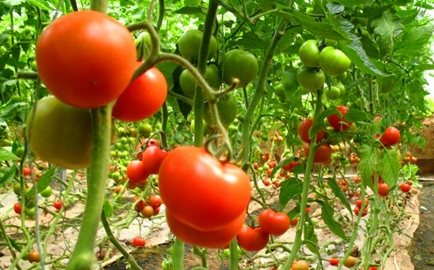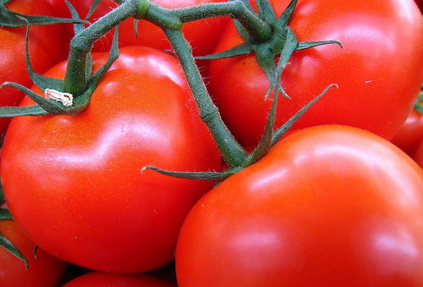First, choose the appropriate variety: hair powder 802, L-402, L-412 and so on.
Second, determine the appropriate sowing date: the determination of the sowing date, not only to consider the time of the previous crops, but also to make the tomato harvesting period in the "floating" period (this is the important economic relationship between the summer and tomato factor). The summer tomato seedling period is 35 days to 40 days, and the fruit is sown until the first fruit picking is 90 days to 100 days. Then, the suitable sowing date is from late April to mid-May.

Third, cultivate disease-free and strong seedlings
(1) The seeds are immersed in a 10% trisodium phosphate solution for 20 minutes, rinsed with water, and soaked in warm water at 55 ° C for 20 minutes with constant stirring. When the water temperature drops to 30 ° C, soak for another 6 hours to 8 hours, remove, drain excess water, germination at 28 ° C ~ 30 ° C conditions, until most of the seeds are white when you can sow.
(2) Selecting the disease-free soil and fully fermented and decomposed organic fertilizer to form a nutrient soil according to 7:3. Each 1000 kg of nutrient soil is uniformly mixed with 50% carbendazim, 70% thiophanate or dextrozine 8 g, and 2.5% trichlorfon 60 g to kill bacteria. The nutrient soil was placed in a nutrient bowl of 8 cm × 8 cm, and after pouring water, a white seed was sown each time, and the soil was covered with 1 cm. After sowing, put a shed on the seedbed to adjust the temperature, avoid rain and prevent pests and diseases.
(3) Spraying 1000 times of phytopathogenic (or 300 times of virus A) and 500 times of 80% of new Wansheng (or 600 times 64% antivirus mites, 500 times 70% daisen every 7 days to 10 days after emergence) Manganese zinc, etc.). To prevent viral and fungal diseases. And through the use of insect nets and spraying pesticides, timely control of aphids and whitefly. During the nursery period, temperature management should be carried out: about 25 °C during the day and 15 °C at night, so that the seedlings of the cultivated seedlings are 15 cm to 20 cm high, with 6 to 8 true leaves, thick stems, short internodes, and hypertrophy of leaves. The color is dark green, the top of the plant is flat and slightly concave, and the roots are much more.

4. Colonization: Clean the front crops in the solar greenhouse from 7 days to 10 days before planting. Each 1/15 hectare of cooked high-quality ring fertilizer 5000 kg, 50 kg of superphosphate, 15 kg of urea, 30 cm deep, and then closed the membrane. After 5 days to 6 days in the high temperature roasting shed, cover the shading net on the shed film, add an insect net at the front vent and the top vent of the shed, cool down the air, and level the ground, then ridge: ridge back width 80 Centimeter, the furrow is 40 cm wide and the ridge is 15 cm to 20 cm high. Combined with ridges, 15 kg of potassium sulphate per 1/15 hectare. When planting, the line spacing is 65 cm to 70 cm, the small line spacing is 50 cm to 55 cm, the plant spacing is 35 cm, and the small line spacing is on the ridge back.
V. Management after planting
1. Increase the supply of fertilizer and water on the basis of watering the planted water, and apply fertilizer and watering after the slow seedling and the first inflorescence, and apply 15 kg of urea per 1/15 hectare.
2, after the implementation of chemical control for the first time after topdressing and watering, spray 150PPM to help the strong; after the second top dressing, watering, spray 200PPM to help the strong.
3, the whole branch takes a single-rod pruning, leaving 4 ears per plant, and 3 to 4 fruits per ear. Use anti-falling scented flowers, and timely flower thinning and fruit thinning. Timely snoring and removal of old leaves and yellow leaves.
4. Strictly prevent pests and diseases In the process of operation and management, pay attention to sealing the insect-proof nets to prevent the invasion of external insect sources. At the same time pay attention to the observation of the disease, once the diseased plants are found, it is necessary to prevent and cure common diseases in time: viral diseases, early blight, leaf mold, gray mold, ulcer disease and so on.
Commonly used drugs: 1000 times of plant disease, 300 times of virus A300 times, 600 times of big life, 70% methyl thiophanate 800 times to 1000 times liquid, 64% antivirus 矾 500 times liquid, quick keling 1000 times to 1500 times Wait.
Jasmine tea belongs to the category of floral teas and is a type of reprocessed tea], also known as jasmine scented tablets.
It is made from both tea leaves and jasmine flowers, so it can have the fragrance of both. Jasmine tea is one of the most famous types of tea. The tea is smoked with jasmine flowers, hence the name.
Jasmine tea is one of the many varieties of flower tea, and is made by adding jasmine flowers in bud to green tea. For example, if you use Longjing tea and use jasmine flowers to make it, it is called Longjing jasmine tea.
Jasmine Tea Powder,Jasmine Green Tea Powder,Jasmine Milk Tea Powder,Jasmine Green Milk Tea Powder
Shaanxi Zhongyi Kangjian Biotechnology Co.,Ltd , https://www.zhongyibiotech.com